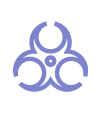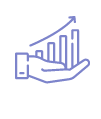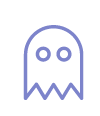5.6.1. Web UI `Home` screen
After pressing one of the
`HOME` or `GATEWATCHER` buttons on the navigation bar, the `Home` screen is displayed.It includes the following items:
Item |
Description |
|---|---|
1 |
|
2 |
|
3 |
5.6.1.1. `Home` screen dashboard selector
The screen displays a set of:
A button to select the GCap whose information is displayed
Three buttons to set the theme of the items displayed
Item |
Name |
Description |
see description |
|---|---|---|---|
1 |
Display of selected GCaps |
Selection of GCaps |
|
2 |
|
Selection of the default display |
see below |
3 |
|
Selection of the main risk screen |
|
4 |
|
Selection of the main relationships screen |
5.6.1.2. `Home` screen display area
After pressing one of the
`HOME` or `GATEWATCHER` buttons, the display area looks like this:The display shows the information of the selected GCap(s) (7).
The screen provides a summary of the detection status:
- The area indicating the number of potential risks by level and date (item 1 to 6)These elements forming this zone are listed below:
Risk counters classified as Critical risk :
Benchmark |
Engine |
State |
|---|---|---|
1 |
`Critical risk``24h` |
Counter giving the number of risks critical appeared in the last 24 hours
If you press this counter, then the system displays the detailed list of each of these risks (Alerts screen)
|
2 |
`Critical risk``7 days` |
Counter giving the number of risks critical appeared in the last 7 days
If you press this counter, then the system displays the detailed list of each of these risks (Alerts screen)
|
Risk counters classified as High risk :
Benchmark
Engine
State
3
`High risk``24h4
`High risk``7 days`
Risk counters classified as Medium risk:
Benchmark
Engine
State
5
`Medium risk``24h`6
`Medium risk``7 days`
Risks classified as low risk have no counter displayed:
- The engine condition zone (8).If you press this area, then the system displays the
`Health Checks`page (see Web UI `Health checks` screen). - The area indicating the date of detection (9): this calendar indicates when potential threats have been detected.
- The MITRE association area (10).If pressed, then the system displays the
`Alerts`MITRE filtering page (see Web UI `Alerts` screen).
5.6.1.3. `Home` screen message area
The list of messages displays the 10 aggregate threats with the highest level of risk.
This area gives the following information:
Benchmark
Name
Description
1
`RISK2
`ALERT TYPE`3
`LAST SEEN`4
`NAME`5
`COUNT`6
`MITRE`7
`ACTIONS``ACTIONS`For a malware threat, the possible action is`Files transactions`. This command opens a Kibana window in the`Malcore`tab.For a Shellcode threat, the possible action is`Go Hunting`. This command opens a Kibana window in the`Codebreaker`tab.
Pressing a threat opens the
`Alerts` window that displays threats with the same infection as the selected infection5.6.1.3.1. MITRE Icons
In the MITRE column, the following icons can be displayed:




